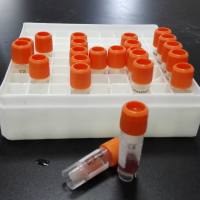Peroxisomes take part in various metabolic pathways related to the regulation of lipid homeostasis. Although detailed information on the enzymes involved in the peroxisomal lipid metabolism was acquired in the past, the mechanisms of metabolic exchange between peroxisomes and the cytosol or other organelles still remain an enigma. Therefore, a detailed analysis of the peroxisomal membrane proteome could help identify potential metabolite transporters. However, because of their highly hydrophobic character, membrane proteins tend to precipitate in aqueous media, making their fractionation still a challenging task. To overcome these obstacles, we have elaborated a protocol for the separation of both hydrophilic as well as hydrophobic proteins using free flow isoelectric focusing (FF-IEF). Similar to traditional gel-based isoelectric focusing, a denaturing electrophoresis buffer containing a mixture of urea, thiourea and detergents is applied to keep highly hydrophobic proteins in solution. Electrophoresis is conducted on a BD Free Flow Electrophoresis System with a linear pH gradient from 3 to 10 and sampled into 96 fractions. As a second dimension, sodium dodecyl sulphate–polyacrylamide gel electrophoresis (SDS–PAGE) is used to further separate and visualize the protein pattern of the peroxisomal subfractions of matrix, peripheral and integral membrane proteins. The identification of the known peroxisomal membrane proteins PMP22, PMP70 as well as mGST in the subsequent matrix-assisted laser desorption ionization time of flight mass spectrometry (MALDI-TOF MS) analysis of the 100 most prominent protein bands has documented the suitability of this new technique for the analysis of hydrophobic proteins.






